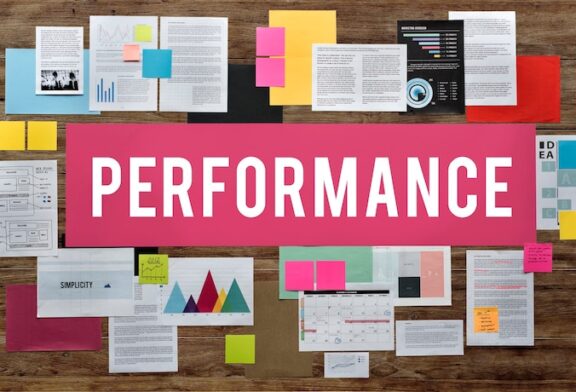Let’s explore a scenario. The appraisal period for your workers is coming up. While you have monitored his KPIs, you are still in doubt regarding their performance and whether or not they are suitable for their particular team.
Here, a solution that you can adopt is the 360-degree feedback method, which helps achieve the following:
- Getting inputs from KPIs.
- Checking in with the supervisors.
- Taking reviews from peers.

With evolving needs of a business and the workforce, simply judging a worker’s performance based on assignments is not enough. They should also be a good fit for the organisation and the team they have been placed in. Further, the best of the workforce go beyond their assigned roles, not only to motivate themselves but also their peers and achieve milestones in addition to their goals.
Opting for a 360-degree feedback appraisal system helps take stock of all of the above.
What is 360-degree Feedback?
Alternatively termed as multi-rater feedback, the 360-degree feedback method establishes a system where inputs regarding a specific employee are collected from multiple sources. This includes their peers, immediate supervisors, managers, as well as self-assessment reports.
In a nutshell, the 360-degree feedback method comprises of the following:
To be effective and well-rounded, a 360-degree feedback system should account for the following:
- Communication skills
- Interpersonal skills
- Collaboration and teamwork
- Leadership and management capabilities
- Innovation and creative abilities
- Whether or not their goals adhere to business goals
Some organisations also account for external feedback, such as that from clients, vendors, and other associates, to get a thorough understanding of the employee and their performance.
Why is 360-degree Feedback Important?
As per a Gallup study, when an employee receives feedback regarding their work and performance, they offer a 15.9% better turnover rate compared to their peers who do not receive one. The 360-degree feedback appraisal system widens the scope of the employee appraisal and review process, and offers the following:
- A better overview of an employee’s performance.
- A more objective evaluation system.
- Reduced bias among employees.
- More emphasis on employee development.
- Better decision-making regarding assignments, promotions, and incentives.
- Creates a transparent culture and facilitates teamwork.
The above establishes a system to improve the quality of working relationships. Employees learn more about where they can improve, thus offering a better quality of work. They are also able to take up self-development to achieve their long-term goals. Thus, the 360-degree feedback method has grown to become a necessity.
Benefits of 360-degree Feedback
By learning how to deliver 360-degree feedback results with accuracy, a workplace can enjoy the following benefits:
- Competitive advantage over other organisations of its kind.
Since the 360-degree feedback method focuses on getting inputs from all levels of the organisation, even for those in leadership positions. This helps the leaders learn how they can improve, offering the organisation an edge over others.
- Better quality of customer service.
Receiving feedback from clients lets employees know where they can improve in terms of service delivery. It also helps improve customer interactions, thus increasing brand loyalty.
- Increased recognition and accountability.
Everyone wants their work to be seen and appreciated, and peer recognition, owing to 360-degree reviews, makes this possible. Further, it increases accountability for work not only at an individual level but also as a team.
- Higher profitability, teamwork, and employee productivity.
Owing to better communication between team members, collaborative work becomes easier and more efficient. This improves the productivity and profitability of the organisation.
- Better performance assessments, especially for larger teams.
In larger teams where regular interaction with the manager is rare, inputs from peers and immediate supervisors can help fill in the gaps. This makes employee performance assessments more accurate.
- Give managers a better understanding of their workers.
By knowing exactly where a worker is falling short, managers can address the skill gap and coach them to do better. Further, by recognising areas where the employee is excelling, the managers can determine whether or not they are suitable for additional responsibilities.
- Availability of a larger talent pool.
Since the 360-degree feedback appraisal system gives a thorough report on every employee, it becomes easier to identify ones who are suitable for a leadership role. This helps establish a talent pipeline for succession planning.
- Low employee turnover rates.
With a 360-degree feedback method, employees face a more transparent review process that makes them feel seen. This reduces turnover rates, which in turn saves on the costs of hiring a fresh employee or retraining an existing one.
Implementing an effective 360 degree feedback process, from choosing the best tools to applying the relevant mindset
360-degree feedback is a valuable addition to the overall practice of gathering feedback related to an employee’s performance and development. While manager-to-employee feedback is essential (and should be conducted as part of an ongoing process that includes real-time performance feedback), 360-degree feedback introduces additional information from peers which might otherwise be missed.
As Maury Peiperl outlines in his article for Harvard Business Review, Getting 360 Degree Feedback Right:
“Companies that have success with these programs tend to be open to learning and willing to experiment. They are led by executives who are direct about the expected benefits as well as the challenges and who actively demonstrate support for the process. By laying themselves open to praise and criticism from all directions and inviting others to do the same, they guide their organizations to new capacities for continuous improvement.”
Effective 360-degree feedback programs can bring a range of benefits:
- Promoting dialogue about performance and development throughout the company
- Acting as a strong launching point for more effective professional development
- Improving confidence and boosts employee morale
- Clarifying strengths and weaknesses which otherwise might not be acknowledged
- Increasing reciprocity by encouraging constructive feedback
1. Plan your objectives and the competencies you want to measure
Our goals can only be reached through a vehicle of a plan, in which we must fervently believe, and upon which we must vigorously act. There is no other route to success.
Pablo Picasso, artist
When starting a new 360-degree feedback process, you need to determine the core objectives you want to achieve. Typically this process should focus on an employee’s personal and professional development, with the aim of helping them achieve goals related to these concerns.
Next, define the key competencies, values and behaviours you want to evaluate, whether these relate to organizational values or competencies specific to the employee’s role. Leadership competencies such as problem-solving and strategic thinking are other factors worth considering since these are universally positive traits to develop.
2. Define how you want to rate the feedback
Once the objectives and competencies have been determined, the next phase is to establish the rating method to be used when gathering feedback. Performance management tools offer versatile solutions to this process, allowing managers and HR leaders to choose the rating scale most appropriate for the situation.
Some examples of the rating scales you can use as part of a 360-degree feedback process include:
3-Score Rating
This simple rating system allows users to rate employee performance as either unacceptable, meeting expectations, or exceeding expectations.
Customer Scorings
360-degree feedback isn’t necessarily limited to an internal process within the organization. Customer scores rating their experience on a scale from poor to great can help business leaders analyse employee performance in a wider context.
IDP 1-5 Scores
This rating allows respondents to score people on a sliding scale of performance, from needing improvement and requiring development, to exceeding expectations and delivering exceptional work.
A comprehensive performance management suite allows users to add a scoring template of their own. This makes it easy to tailor the ratings to suit the specific requirements of the 360-degree feedback program.

3. Outline the content of the questionnaire
The type of questions featured in 360-degree feedback will vary depending on the roles and responsibilities of the employee in question, and the aspect of development the feedback relates to. Questions regarding the performance of a new hire who has reached the end of his or her probationary period will be significantly different to the questions asked relating to a long-term employee reaching their annual appraisal.
With that said, there are a range of generic questions which you can include in 360-degree feedback that are appropriate for a wide range of circumstances.
For example, consider including the following open-ended questions:
- What are the employee’s strengths and weaknesses?
- What is something this employee should do more or less of?
- How effectively does the employee manage their time and meet their deadlines?
- How would you describe this employee in three or four words?
- What areas would you like to see this employee improve in?
Additionally, 360-degree feedback can include closed-ended questions which the respondent chooses from a list of options. For example, each statement can be responded to with “strongly disagree”, “agree”, “neutral”, “agree”, and “strongly agree”. Statements to consider using in this category include:
- This employee demonstrates effective leadership skills and helps motivate others.
- This employee communicates well and exhibits strong interpersonal skills.
- This employee is a great team player who effectively helps organise groups.
- This employee embodies the core values and principles of the company.
- This employee is good at solving problems and discovering creative solutions.
4. Choose the platform to implement the 360-degree feedback process
A successfully implemented 360-degree feedback process requires the right platform for the job, and high-quality performance management software includes these necessary tools. Customisable 360 appraisals are easy to set up and scale, and can be applied to a wide range of 360 feedback processes for all employment and review types.
Some other features you should look for in performance management software to assist with the 360-degree feedback process include:
- Development objectives. Understanding an employee’s development goals and overall plan helps orient 360 feedback questions towards the appropriate topics.
- Skills. Tracking employee skills helps managers, HR leaders and employees to see clearly their areas of expertise, and fields where further development is necessary.
- KPI Objectives. Analysing where an employee is currently at with regards to their objectives can help to focus priorities when conducting 360 degree feedback.
5. Decide which employees you wish to nominate for the 360 feedback process
It’s a rare occasion when managers and HR leaders will need to gather 360 feedback from the entire workforce. Any given employee only works with a finite number of colleagues in their given team and department, so company-wide feedback will result in a lot of irrelevant data and create an unnecessary workload.
One way to make sure the 360-degree feedback questionnaires are sent to the appropriate people is to use department and organisational charts and skills databases, which are included in some performance management systems.
These charts, which are automatically updated whenever a new employee joins the company, present an accurate overview of the various roles within the company. This makes shortlisting the relevant people with a working relationship with the employee simple. The addition of a skills database means that 360 feedback can be solicited from those with the appropriate skills and training to make a clear and appropriate judgement.
6. Implement the mechanisms for support and feedback
I’m a great believer that any tool that enhances communication has profound effects in terms of how people can learn from each other, and how they can achieve the kind of freedoms that they’re interested in.
Bill Gates, founder of Microsoft
Gathering feedback on your company’s 360-degree feedback process is crucial, especially if the organization lacks experience with this process. Such feedback will help managers and HR leaders to refine the questions included in the process and ensure participation in the process is optimal.
You should also use your existing feedback and communications mechanisms to offer any support to participants as and when it is needed. This can help identify any misunderstandings about the process, verify the overall purpose and clarify how the results will be communicated to other employees.
7. Launch the 360-degree feedback process
Once the process has been fully established and the list of intended recipients for the 360-degree feedback finalised, it’s time to launch the process in full. Use the performance management tools you’ve assigned for this task to ensure a smooth rollout.
You can use these tools to deliver push notifications to each recipient so that managers and HR leaders who are responsible for assessing the feedback can receive verification that the 360-degree feedback questions have been received and understood.
Consider running a pilot 360 degree feedback process
If this is the first time running a 360 degree feedback session of this kind, you might consider developing and running a pilot process before rolling out the actual plan. To do this, nominate a small group of employees to form the test cases, and work through the process to better understand the overall impact and effectiveness it has.
A pilot process is also useful for identifying any issues or roadblocks which might negatively impact the results so that these can be fully addressed before you roll out a 360-degree feedback program across departments or throughout the company at large.
8. Generate reports to analyse the feedback received
Performance management software allows business leaders to generate extensive reports covering a wide range of metrics. This data analysis can be applied to the information gathered during the 360-degree feedback process.
Data based on the rating system established in the early phases can be used to analyze employee performance across a range of measures. This gives managers and HR leaders a clearer understanding of how their performance has changed over time, what issues have been resolved since previous appraisals, and any new concerns which need to be addressed.
It also gives business leaders a more detailed overview of company-wide issues, allowing them to identify trends that are affecting multiple employees within a given team or department or a particular category of roles.
9. Use the feedback to generate an action plan for the employee
The fundamental objective of gathering 360-degree feedback is to make a better-informed decision regarding employee performance and development. This feedback provides the necessary context for understanding their strengths and weaknesses, and how well they work with colleagues. It also flags any problems which need addressing that are otherwise overlooked during the traditional manager-to-peer feedback process.
360-degree feedback can inform the development of an employee by:
- Allowing employees to address performance-related issues not previously flagged by their direct reports
- Helping employees improve their working relationships with their colleagues
- Guiding employees to the appropriate training and coaching to address performance issues
- Redefine an employee’s duties and responsibilities by updating their personality profile and behavioural traits
- Sharing the (anonymous) constructive 360 feedback with the employee to give them an opportunity to create their own plan of action for improvement
10. Update the 360-degree feedback process to improve it in the future
As with traditional feedback, 360-degree feedback is an ever-evolving process that business leaders should constantly seek to improve. Not only does this process help improve the development and performance of the individual, it also serves to foster a sense of organizational justice.
As a study from the Journal of Business Research explains:
“A sample of 400 employees occupying various positions in home appliances and electronics organizations contribute to this research. The results of the path analysis (PA) demonstrate that the implementation of 360-degree feedback in an organization not only gives rise to organizational justice but also aids in sustaining this justice and making justice an integral part of the organizational culture.”
360 feedback helps employees identify their strengths and weaknesses so that they can become the best they can be, both as individuals and as team players. The additional insights provided through this process contextualise their overall performance. Reflecting on the process and refining the mechanisms in place ensures optimal results.
Why the 360-degree Feedback System Matters in the Modern Workplace
Modern workplaces involve a large portion of remote and hybrid workers. Further, larger organisations have extensive teams where regular interactions between managers and front-line workers are rare.
By following the 360-degree feedback best practice guidelines, a manager can uncover the below:
- Contribution of every member of the team.
- Gaps in perception regarding employees and reality.
- Opportunities for employee development.
Thus, the 360-degree feedback system paints a better picture of all employees in a modern workforce, offering in-depth, well-rounded insights on each of them.
The Ideal Frequency of a 360-degree Feedback
Once you know how to implement a 360-degree performance appraisal, it is time to determine its periodicity. Depending on the size of the workforce and how the organisation is structured, the frequency of 360-degree feedback can be set from quarterly to annually.
Shorter gaps between two subsequent reviews help identify gaps as and when they come up, plus recognize achievements early. However, this can take up too much time, and is not a possibility for large teams.
On the other hand, the frequency of getting 360-degree feedback should not be less than that of appraisals. This is important since the data from the 360-degree feedback appraisal system plays a role in the outcome of performance reviews.
Get Actionable Insights for Sustainable Growth
The 360-degree feedback appraisal system allows the managers and HRMs to view the workers from the POV of others, namely their peers, clients, and immediate supervisors. When used right, this system provides actionable insights to help the managers lead and employees grow.
Wishing for high-performing teams? Address employee productivity with seamless 360-degree reviews.





